Black Heroes in Every War :: African-American History, Heroism, valor and sacrifice from the very beginning and in every war, and almost every skirmish
#BlackLivesMatter
Black Heroes in Every War
We all have a responsibility to the country we call home
hosted by Robert Shepherd
How do you like my page?
hosted by http://robt.shepherd.tripod.com
Choice of content is solely the responsibility of Webmeister
Robert Shepherd
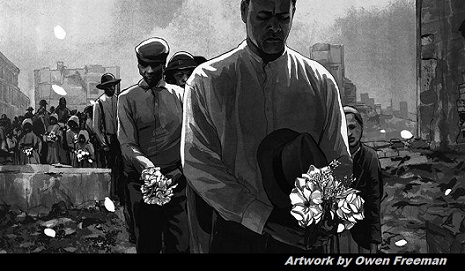
First 'Decoration Day' Charleston SC
Know Your History: Memorial Day was started by former slaves on May 1, 1865 in Charleston, SC to honor 257 dead Union Soldiers who had been buried in a mass grave in a Confederate prison camp. They dug up the bodies and worked for 2 weeks to give them a proper burial as gratitude for fighting for their freedom. They then held a parade of 10,000 people led by 2,800 Black children where they marched, sang and celebrated.
(Also see: The Black Roots of Memorial Day)
|
Black Heroes in Every War
They Were All-American Heroes - No Question
Eyes on the Prize
Hire Patriots
Preparing the next generation
of all-American heroes
It is rather for us, the living, to be here dedicated to the great task remaining before us ...
That, from these honored dead we take increased devotion to that cause for which they here, gave the last full measure of devotion -- that we here highly resolve that these dead shall not have died in vain ...
- Lincoln -
|

Dr. King |
The ultimate measure of a man is not where he stands in moments of comfort
and convenience, but where he stands at times of challenge and controversy.
|
(as Barack Obama says)
"America is the greatest country on earth -- but it didn't just happen on its own."
Never forget their sacrifice

|
Black Warriors
in America's History
|

|
Give me men to match my mountains
African Americans have served as underappreciated heroes in every war and countless 'unofficial' skirmishes and conflicts throughout the history of our nation -- and even in colonial days. There has scarcely been a battle when America has not been served by the valor and sacrifice of what poets have called "the darker brother." Like the Kipling poems of England's Victorian "empire" period, America also has a story of forgotten heroes, and a public that seems barely aware of the courage and honor of, in some cases, gallantry almost beyond words.
Kipling wrote of the unappreciated 'Tommy Atkins' - despised or held scarcely above outright contempt - UNTIL the nation needed him. Then he was the hero, the saviour, the man who stood in the gap, who came to his nation's rescue in its our of need. Another Kipling poem describes the despised 'Gunga Din' the brave dark fighters who shed their blood, gave their lives, on behalf of an empire that owed them better. And for Kipling, the white professional soldiers could only say in awe, "You're a better man than I am, Gunga Din."
But in America's case, its Black warriors were not foreign, they were home born and every bit as American as their brother warriors of lighter hue. At long last, America is waking to the glory of "the darker brother" on the field of battle. Just as has been shown in other fields of achievement, perhaps beginning with America's unique homegrown religious heritage, the black contribution has been profound.
The original core of this document was begun by Professor Cunnea as a homework aid for his classes.
A note to researchers of "Buffalo Soldiers" -- the
Buffalo Soldiers were African-Americans used in the U.S. war to protect settlers not only against brigands but also (primarily) against certain Native
Americans. The web has numerous sites on the Buffalo Soldiers but please be aware, while the Buffalo Soldiers spoke American English, and tended to think somewhat similar to the "white" Americans, history reveals that they also shared the prejudices against socalled marauding "red men." You should be aware of this.
The first Buffalo Soldiers were the 9th and 10th Cavalries, formed by
the U.S. Army in 1866 and mostly composed of freed slaves and Civil War vets. The patrolled the Mexican border, participated in the Spanish-American War, and in the U.S. expedition to the Philippines. While it is regrettable that black Americans should have participated in military actions adversely affecting native peoples, students should remember that not all the reprisals and measures taken by the government were unprovoked, nor were all of them carried out with the ruthlessness we sometimes hear of. Buffalo soldiers and black cowboys were merely one factor in the opening of the West, and a certain toughness went with the territory. It was a job somebody had to do, and the oppressive aspects, while not excusable whatsoever, were indeed one part of that history. The Buffalo Soldiers were disbanded in the 1950's when President Harry Truman integrated the armed forces. A television movie called "Buffalo Soldiers" starring Danny Glover was made in 1997 and may be available to students on video. It aired on TNT. Set in New Mexico Territory in 1880, it is a fictionalized account of the conflicts between the Buffalo Soldiers and the Native Americans then `plaguing` the pioneers westward.
To Our readers: if you find sites that you cannot reach, we'd appreciate if you alert us -- Dee.
And remember. Freedom isn't free.
Support Our Troops
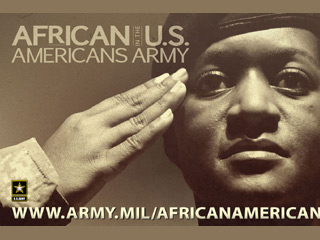
Comprehensive Sites - no single time period
African
American Warriors -
Perhaps the best site to start with; it covers Black participation in most U.S. military
actions.
Texts in African American History -
In their own words: everyone from Revolutionary War soldiers to Malcolm X.
African Americans in the Military
- historical perspective :: covering all time-frames and wars
National Minority Military Museum Foundation - African American (and other groups) neglected role in the heroic defense of America and her freedoms. It's about time the story is told.
All-American Success Story - widespread African American career triumph emerging in the United States Armed Services.
Black Americans in Defense of Our Nation - a heroic story that deserves to be told.
Negro Army Units: covering 1866 - 1950 - an enumeration of many of the black units, in particular those fighting in the period of World War I and World War II.
REAL African American Heroes - dedicated to all African Americans who over the years have made a difference. Focus is military history, Medal of Honor, Distinctions of Valor and heroism. Also notable black Astronauts, and others.
General Colin Powell -
The Chairman of the Joint Chiefs exhorts American heroes of today.
Colonial America: the French and Indian War
In the French and Indian War both northern and southern colonies used black soldiers. Particularly was this true in New York and Connecticut (which had black men in twenty five militia companies). Several colonies adherred to the classical concept that to risk one's life (by serving in combat) was legally tantamount to earning ones freedom. Benjamin Quarles: The Negro in the Making of America
First Martyr of the Revolution
Boston's Own Crispus Attacks
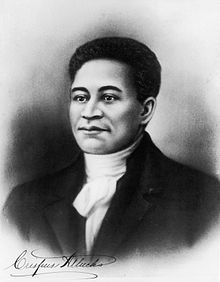 Before Jefferson's Declaration, before Bunker Hill, there was Crispus Attucks and his motley crew of waterfront "rowdies" as the British called them
Before Jefferson's Declaration, before Bunker Hill, there was Crispus Attucks and his motley crew of waterfront "rowdies" as the British called them
Crispus Attucks (born ca. 1723; died March 5, 1770) was an American hero, a onetime slave, merchant seaman and dockworker of Wampanoag and African descent. He is generally regarded as the first person shot to death by British redcoats during the Boston Massacre. Hot tempered and radical, he gravitated to the group bent on confrontation with the hated tax collectors, and the redcoat troops supporting them. The Stamp Act and the subsequent Townshend Acts had inflamed colonial sentiments, exacerbating tensions.
Little is known for certain about Crispus Attucks beyond that he, along with Samuel Gray and James Caldwell, died "on the spot" during the incident. Two major sources of eyewitness testimony about the Boston Massacre, both published in 1770, did not refer to Attucks as a "Negro," or "black" man; it appeared that Bostonians accepted him as mixed race. He must have been popular, perhaps somewhat charismatic, for he was identified as the leader of the motley Waterfront crowd. Historians disagree on whether Crispus Attucks was a free man or an escaped slave; but agree that he was of Wampanoag and African descent.
While the extent of his participation in events leading to the massacre is unclear, Attucks in the 19th century became an icon of the anti-slavery movement. He was held up as the first martyr of the American Revolution along with other victims of the shootings. In the early nineteenth century, as the Abolitionist movement gained momentum in Boston, supporters lauded Attucks as a black American who played a heroic role in the history of the United States Because Attucks had Wampanoag ancestors, his story also holds special significance for many Native Americans.
American Revolutionary Period
American Revolution. About 7,000 African Americans served in the Continental Army, mostly in integrated units, some in all-black combat units. The first American of any race to die in the American Revolution was a black man, Crispus Attucks, who held opinions equally as radical as Sam Adams and James Otis, and was anything but diplomatic in confronting the British "peace-keepers." This "Boston Massacre, as it came to be known, inflamed public opinion all up and down the colonies, leading (in scarcely a decade) to war, the Declaration of Independence, and freedom from British control. There were other notable valiant African-Americans, including, for one, the hero of Bunker Hill, Peter Salem, who in a feat little short of supernatural, single-handedly killed the British commander (Pitcairn).
Another black veteran at Bunker Hill was Barzillai Lew, who had first served in the French and Indian War as a Pepperell enlistee in a Massachusetts company. The historian Quarles says that most noteworthy of all was Salem Poor. So exceptional was Poor's conduct that fourteen officers sent to the legislature a petition of his behalf. According to their statement, Poor 'behaved like an experienced officer, as well as an excellent soldier.' Poor later served at Valley Forge and White Plains. To the south, Virginia had its Salem Poor in the person of William Flora of Portsmouth. Serving with the local militia in the Battle of Great Bridge, free Negro William Flora was the last sentinel to leave his post as the enemy approached. Withdrawing amidst a shower of shot, Flora returned fire eight times. Also of note was the participation of Black men in the battles of both Lexington and Concord, among them Pomp Blackman, who later served in the Continental Army, and Prince Estabrook, a casualty.
Proclamation
for Freedom: African Americans in the Revolution
The Revolution's Black Soldiers - Robert A. Selig's article. It was George Washington himself who opened the door for black participation in his general orders of January 12, 1777, in which he instructed recruiters to "enlist none but Freemen," the implication being that the recruit could be black just as long as he was free.
Annuit Coeptis :: Occult Beginnings - our missing founding father Prince Hall, Freemason. Prince Hall, a free black man in Massachusetts, urged the enlistment of both enslaved and freed blacks for the attempt to free the American colonies from British control. Hall was concerned with the development of the colonies if they gained independence. He was certain that involvement of blacks in the construction of the new nation would be the first step toward the complete freedom for all blacks. The Massachusetts Committee of Safety declined Hall's proposal to allow blacks the opportunity to fight for the colonies. Prince Hall and his supporters petitioned the Committee by comparing Britain's ruling of the colonies with the enslavement of blacks.
A proclamation from England guaranteed blacks that if they enlisted in the British army instead of the Continental they would be freed at the end of the war. Only after the British Army began to use blacks in their troops did the Colonial Army change its decision to block admission of blacks into the military.
It is very likely that happened because of his strong support for the revolutionary cause. Prince Hall served in the Massachusetts militia during the American Revolutionary War. He has been called our "unknown founding father" because conventional textbooks so rarely mention his pivotal role, and his trail-blazing significance in America's incipient abolitionist movement.
Royal Ethiopian Regiment -
The British Royal Governor of Virginia issued a declaration in 1775 that any enslaved black person or indentured white person "or others" (probably
referring to Native American slaves) who could bear arms and would agree
to fight to preserve British rule over the American colonies would immediately
be freed. Enough black men volunteered to create several units. They were
promised farms as payment, which were never given. Most famous of these soldiers is Thomas Peters, who later went on to found a town in Sierra Leone.
Blacks
in the American Revolution - The Revolution gave blacks a chance to assert their drive for
freedom. While the Revolution did not emancipate them, it united them
in their belief of freedom and laid the foundation for the future, distant thought that might be.
African Americans in Early U.S. Military History - Black heroes have participated in military conflicts since the colonial period. In colonial conflicts and the War for Independence, black men served in militia units and the Continental Army. [Bryan Rommel-Ruiz]
Crispus Attucks
- First hero of the Revolution. On the night of 5 March 1770 a merchant seaman and escaped slave became the first hero of the Revolution. Attucks undertook to be, as John Adams calls him, a "hero of the night," leading a mini-army of Bostonians in confronting the British troops. Unarmed but for rocks, sticks, and epithets, they followed the inspired Attucks right to the soldiers. Attucks had, in Adams' words, "hardiness enough to fall in upon them, and with one [bare] hand took hold of a bayonet, and with the other, knocked the man down." The panicked British shot him down, along with four of his followers. Another Crispus Attucks resource.
Peter Salem - Shot and killed British Commander. Major John Pitcairn, leader of Redcoats in the Battle of Bunker Hill, was shot and killed by African American (former slave) Peter Salem. Stamp issued in commemoration (painter John Trumbull)
How the black revolution of Haiti impacted the young USA
After Cornwallis surrendered to the raggle taggle Yankee Doodles at Yorktown, independence for the new country was achieved. The Peace of Paris formalized it. In France, ferment was brewing, which only worsened as the King and Church sought to repress it. Finally, in 1789 the "slaves" threw off their chains and declared themselves free. They raised their three-colors (blue, white and red) and invoked the high ideals of liberty, equality, and fraternity.
Half the world away, in the sugar rich colony of Haiti (then Saint Dominique) some black slaves heard of the courage of (1) America's successful revolution and (2) the Paris "sans culottes" (French Revolution) and resolved to imitate their stand for freedom. Toussaint L'ouverture was one of these. France sent troops and fought fiercely for Saint Dominique, the sugar-rich Caribbean linch-pin to its new world empire. When after a dozen years, Toussaint defeated the white French, he had accomplished the unthinkable.
Toussaint and his fellow slaves had achieved the elimination of slavery and the establishment of Haiti as the first republic ruled by people of African ancestry. Although hundreds of rebellions occurred in the New World during the centuries of slavery, only the revolt on Saint-Domingue, which began in 1791, was successful in achieving permanent independence under a new nation. The Haitian Revolution is regarded as a defining moment in the history of Africans in the New World. When it ended in 1803, the total loss was a decisive blow to France and its colonial empire. Ultimately, the loss of Haiti provided the impetus for Napoleon to seek to divest himself of the Louisiana Territory. Vente de la Louisiane, the French called it.
Toussaint's accomplishment is crucial to American history not merely for his lofty ideals and his personal genius and self-discipline (he was self-educated, sought to build upon stability and renew a financial alliance with France) but he set the stage for America's conintinental expansion, from sea to shining sea.
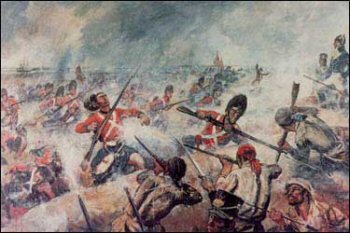
War of 1812 : Battle of New Orleans
Andrew Jackson, stymied by the hostility of the local residents of New Orleans, availed himself of any and all help he could find, notably both friendly Choctaw indians, sympathetic pirates [!] as well as Black fighters, ostensibly "free blacks." We are told that behind the front lines white and free black men forty-five years and older formed home guards to protect private property and maintain order in New Orleans and surrounding towns and posts. A sizable contingent of black former Haitian slaves actually fought on the frontlines as free men of color. Joseph Savary, a black emigré from Haiti and a veteran of the French Army, was instrumental in recruiting volunteers from among the free black immigrants from his homeland to form an all-black battalion. Additionally, slaves and citizens helped widen canals and build defenses along them. Slaves also fortified military positions and fought in several battles of the Louisiana campaign. Women at home made clothing for the troops and flags and bandages for the militia regiments, while nuns and free women of color nursed the wounded at hospitals and convents.
The Crucial Contribution of the Haitian Veterans
Joseph Savary, a hero at the Battle of New Orleans, was a native of Saint-Dominque (Haiti) who had fought with the French during the Haitian Revolution. When Haiti became independent, Savary and his family fled and settled in New Orleans. Savary's occupation in New Orleans between 1809 when he arrived and the War of 1812 is unknown. There is some evidence that he may have worked with Pierre and Jean Lafitte, notorious pirates who operated off the coast of Louisiana and Spanish Texas.
By the time of the War, General C.C. Claiborne, the U.S. military commander in Louisiana, who was familiar with Savary and other former Haitian soldiers, suggested to Commanding General Andrew Jackson that they be incorporated in the United States Army against the British. Jackson extended the offer to Savary who single-handedly raised an entire, full-fledged battalion from among the Free Negro emigrants, veterans from Santo Domingo, most all of whom had fought as loyalists under the French flag in their native land.
The Second Battalion, Free Men of Color of the Louisiana Militia, some 256 men, including staff officers, were assembled in New Orleans and inducted into the service of the United States on December 19, 1814. On the same day, Savary who had already assumed the rank of Captain was promoted to the rank of second major. With that promotion he became the highest ranking black man in the history of the U.S. Army.
The Second Battalion's first battle occurred four days later on December 23rd on the banks of the Mississippi River in New Orleans. Savery and his men fought back the British who were attempting to enter the city. Savary urged his men in French with words from the Marsellaise to "March on! March on, my friends, march on against the enemies of the country."
Thus, the First and Second Battalions of Free Men of Color played an important role in the Louisiana campaign, It is estimated they comprised over six hundred men, just as free black men had during the colonial period in the service of France and Spain. Louisiana was the first state in the Union to commission a military officer of African descent, and an act passed by the Louisiana legislature in 1812 was the first in the nation to authorize a black volunteer militia with its black line officers.
Jordan Noble was a free black drummer famous for beating the long roll at the Battle of New Orleans. Born in 1800 in Georgia, Noble came to New Orleans in 1811 and joined the United States army one year later. He participated in several engagements of the Louisiana campaign. At the Battle of New Orleans, he opened with reveille. He later served as a drummer in the Mexican War of 1846-1848 and rallied New Orleans free men of color to form militia companies on behalf of the Confederacy at the outbreak of the Civil War.
Ironically, the Battle of New Orleans technically occurred after the peace treaty had been signed, but it was the greatest American victory of the war, and a unifying all-American recompense for the burning of the infant capital Washington DC. It also showed the volatility of the temperamental Jackson, a hot-tempered man of many prejudices, who adamantly refused (with fitting backwoods profanity) to make any differentiation in the pay of black and white soldiers.
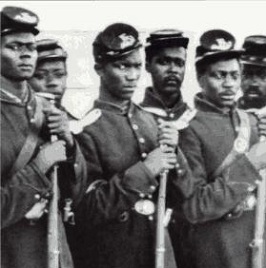
Lincoln called the black combat role pivotal to victory
The Brothers' War (Civil War)
but not the first war in which "brothers" fought
Be it remembered that Lincoln's Emancipation Proclamation was not a precipitous action but was deliberate and carefully fashioned act of MILITARY NECESSITY, predicated on the indispensable military value of the African-Americans in question. Well might it be said that in Lincoln's estimation, it was the strategic military importance of the emancipated African-Americans to which he attributed the ultimate salvation of the Union.
In regular service for the United States of America, over 200,000 African Americans served, with 38,000 recorded as killed. Total participation on behalf of flag and country was easily over a quarter of a million. The valor and effectiveness of these men in the final year and a half of the war was so stunning that Lincoln was compelled to say they were the pivotal decisive factor in victory. As if to underscore Lincoln's realization of the potent performance of the black fighting man, the confederacy in the closing weeks of the war, passed a law calling for the training of an even larger number of BLACK SOLDIERS --- (300,000). This law was signed by Jefferson Davis on March 13, 1865.
In fact, of regular recorded engagements, Union blacks fought in 449 battles, almost entirely as members of all-black units. Altogether, there were 166 all-black units -- 145 regiments of infantry, 7 cavalry regiments, 12 heavy artillery regiments, 1 light artillery regiment, and 1 regiment of light artillery. While there were VERY few black officers in these regiments over all, the fact is that there were 75 Blacks who obtained commissions, including 8 doctors. There were 22 African-Americans winning the Medal of Honor, the nation's highest decoration.
Benjamin Quarles reports that 29,000 blacks served in the federal Navy during the Civil War, and they were treated fairly well, he says, sharing quarters and mess with the whites, as well as having some opportunity for promotion. Four of these black men won the Navy Medal of Honor. Perhaps the best known of these was Joachim Pease, loader of the number one gun on the Kearsarge. One of fifteen black sailors on board this warship when she met the most famous of the Confederate raiders, the Alabama, Pease was cited by his superior officer as having shown the utmost in courage and fortitude.
In one of history's strange oddities, the "First casualty" of the Civil War (at Harper's Ferry) was one Shepherd Hayward, a free southern black man and the baggage master at Harper's Ferry. Shepherd Hayward was a former slave who had earned his freedom, then purchased the freedom of his wife and children. Confronting Brown's posse, he wound up becoming the first casualty of the Civil War. He was shot when he went to investigate the furtive movements of the men in John Brown's party. By an irony of history, Shepherd Hayward was shot and killed by Dangerfield Newby, one of John Brown's followers (and also a black man) whose fondest hope was to rescue his wife and seven children still held in slavery. See Leonard Ehrlich's book on John Brown, God's Angry Man. The Zeal of a fanatic?
An inscription at Harper's Ferry states that Shepherd exemplified "the character and faithfulness of thousands of Negroes who, under so many temptations throughout subsequent years of war, so conducted themselves that no stain was left upon a record which is the peculiar heritage of the American people and an everlasting tribute to the best of both races."
See Dudley Randall's famous poem "Memorial Wreath," in which he pays tribute to all the African American soldiers who served their country in this war between brothers. For Booker T. Washington's immortal Heroes in Black Skins from eText.
The African American Civil War
Memorial in Boston -
An explanation of the Black Heritage Trail in Boston and the Black Civil War memorial to the famous 54th Civil War regiment. The 54th Massachusetts Infantryis best known to modern students as the subject of the
movie Glory.
John Brown, courage and character, valor and sacrifice - John Brown went boldly to the gallows of shame while Robert E. Lee looked on stoically. Like the Europeans who later defied Hitler to attempt to rescue innocent lives, John Brown dared everything in order to lift the stain on America's soul --- the stain of slavery.
Isabella Baumfree, (Sojourner Truth) This amazing woman, called the Libyan Sibyl by Harriet Beecher Stowe (for her uncanny "sixth sense") had an almost prophetic ability to discern dangers, responsible for the deliverance of hundreds of slaves from bondage.
Sergeant William Carney CMH -
First African American fighting man to be awarded the Congressional Medal of Honor. Serving under Robert G. Shaw, Carney lay a few feet from where his commander (Shaw) fell. Summoning all of his strength, Carney held aloft the colors and continued the charge. Having been shot several times, he kept the colors flying high, and miraculously retreated his regiments.
Unsung Heroes of the Civil War - During the Civil War, nearly 180,000 African American men served in the U.S. Army and 30,000 in the Navy. Thousands of African American women fought in various ways as organizers, activists, nurses, cooks, camp workers and occasionally as spies or soldiers.
National Park Service African-American Civil War Sites -
Exactly what it says it is! Nicely illustrated with portraits of Black
soldiers and political leaders of the Civil War, and good explanations of
important units and battlefields.
The Other Side - Blacks who fought for the Confederacy - a much neglected fact about the Men in Gray. Blacks fought for the stars and bars, and at the end it was made official, at the firm behest of Robert E. Lee.
A New Look at the Old South: Beyond "Gone With the Wind" - Complexities and nuances abound, and plenty of outright contradictions. Violence and unexpected kindness. Co-operation and grief as well as tender affection. Some ironies of rednecks and southerners of every color and heritage. A story of love amidst the ruins.
Eastman's Ride to Liberty - the song of a people's history - when sheer survival becomes a story of the loftiest heroism. Here are the makings of an epic for all time. Here are ingredients for a glorious story not yet told. A grand epic of world historical significance no less inspiring than the Exodus Of Moses, and surely ranking with Homer's tales, the Bhagavad-Gita of the Mahábhá:rata, or the Sumerian Gilgamesh.
Powhatan Beaty - courageous Union hero - at last receiving recognition in his native Virginia. He loved America foremost, even fighting against the land of his birth and his former friends and superiors. His heroism and gallantry won accolades of admiration from the testimony of the white fellow soldiers who witnessed it. And grudging acknowledgment from confederates.
Robert Smalls - black hero known for incredible exploit of bravery in his leadership of a group of slaves who gained control of the Confederate ship Planter. Other naval or merchant marine heroes of African heritage during this time have been memorialized in increasing books, articles, movies, websites, and even some public monuments now erected.
Between Two Fires: Black Soldiers in the Civil War by
Joyce Hansen
Published by: Watts Franklin,
1993. Black Americans were caught in the throes of a national angst, a battle for the heart and soul of the Union itself, testing the meanings of nation, identity, liberty, and survival. Their own role was played out in the very core of the conflict.
The First 'Decoration Day' (what now we know as Memorial Day)
Charleston SC - the First Decoration Day - several American towns, north and south, claim to be the birthplace of Memorial Day. But all of them commemorate cemetery decoration events from 1866. Pride of place as the first large scale ritual of Decoration Day goes to African Americans in Charleston. By their labor, their words, their songs, and their solemn parade of flowers and marching feet on their former owners' race course, they created for themselves, and for us, the Independence Day of the Second American Revolution. (David W Blight)
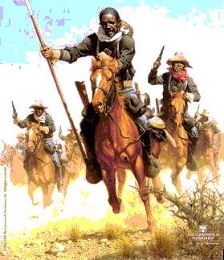
Buffalo Soldiers & black cowboys
Subduing a violent land -- the west
from Appomatox to the closing of the American frontier
Indian Wars. Buffalo Soldiers. 1866-1890. Use of black soldiers was widespread in the west and numerous engagements demonstrated the valor and toughness of the African American fighters. Colonel Grierson insisted to his superiors that the identifyng term "Colored" - as originally prefixed before the title of the regiment - be dropped. He said it was demeaning and unnecessary, and ultimately, he prevailed.
Two all-black cavalry regiments saw considerable use (the 9th and 10th); And two all-black infantry regments were also much used (the 24th and 25th). Stuck with a thankless job, it fell to these Black freedmen to garrison forts, quell disturbances, and generally keep the peace, not infrequently being called to put lives on the line in the name of the United States government. During these wars in the west, heroes in black regiments won a total of twenty Medals of Honor. In 1875 one of these was Pompey Factor.
Portraits in Black-The
Buffalo Soldiers - (see note
above)
Black History (Underground
RR, Buffalo Soliders, etc) Lest We Forget - Bennie McRae's Tribute of Honor to a worthy breed of hero
Films
about Native Americans and Black Americans in US History
Black
Cowboys, Old Cowtown - Wichita honors some sturdy men
Pompey Factor, Medal of Honor in 1875, had fought earlier with Negro Seminole Indians "safe commander" - he distinguished himself on a campaign in Texas against the hostile Kiowas and Comanches. The Medal of Honor citation for his gallantry in 1875 cites an incident in which Factor, leading three other Indian Scouts at the "Eagle's Nest" at the Pecos River, participated in a charge of four Buffalo Soldiers against 25 hostile enemy, risking his life above and beyond the call of duty.
Mabel
Keaton Staupers - No time for Prejudice :: Black Nurse Integrates Army (scroll down)
Johnson Chestnut Whittaker - fighting racism, Whittaker was one of the first three African Americans to attend West Point, he dared to stand proud.
Spanish-American
War
Spanish-American War. Black participation continued in the War with Spain both in Cuba and the Philippines. And again the valor and gallantry of African American fighting men was again on display. Sixteen regiments of black volunteers were recruited; four saw combat. Black heroes took part in the siege of Santiago and others assisted Teddy Roosevelt's Rough Riders in the charge on San Juan Hill. Especially notable Black participation occurred at engagements ranging from El Caney to Corrizal. Five black Americans won Congressional Medals of Honor in this "splendid little war," as TR a bit naively called it.
A Valiant Black Soldier, San Juan Hill - a print from NY Library Collection
A perfect hailstorm of bullets - A Black Sergeant Remembers the Battle of San Juan Hill (Frank Pullen)
The Negro in the Regular Army - Oswald Garrison Villard (etext sourced)
World War I
The Great War. A war in which the contributions of black heroes were badly needed, but the obstacles of racism were thrown in their paths. About 367,000 African Americans served in the American Armed Forces in this War, and of that number 100,000 served in France. The 93rd Division served side by side with the French and numerous awards were won, much to the consternation of certain white American generals. In fact, the first two Americans to win the coveted Croix de Guerre France's highest decoration) were black heroes Sgt Henry Johnson and Pvt Needham Roberts. In addition, an astounding 171 African Americans were awarded the French Legion of Honor.
World War I and Post War society - The story of America's Black heroes in the Great War, they were true sons of freedom.
Vignettes and glimpses - Black soldiers and the sacrifices in the first world war. Focus on the 369th infantry.
The Call to the Colors (E.J. Scott's History) - relates to the 372nd Infantry in the Great War. Thanks to janiceball.1@juno.com (and her co-author Richard Ford).
World War II
Dorrie Miller
Hero of Pearl Harbor
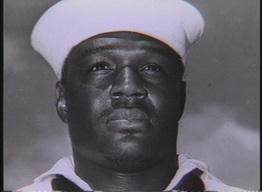 World War II. Over a million African Americans served int the armed forces. all-black fighter and bomber AAF units and infantry divisions gave distinguished service. Numerous acts of heroism were recorded, and though not all duly honored, countless others have come to light. In fact, in the very opening hours of the attack on Pearl Harbor, no hero shone with greater brilliance than the valiant Dorrie Miller a messman on the USS Arizona who despite incredible risk and later injuries to himself, manned a machine gun and downed a confirmed four Jap war planes, and perhaps more. (By 1954, the US Armed Forces were completely desegregated.)
World War II. Over a million African Americans served int the armed forces. all-black fighter and bomber AAF units and infantry divisions gave distinguished service. Numerous acts of heroism were recorded, and though not all duly honored, countless others have come to light. In fact, in the very opening hours of the attack on Pearl Harbor, no hero shone with greater brilliance than the valiant Dorrie Miller a messman on the USS Arizona who despite incredible risk and later injuries to himself, manned a machine gun and downed a confirmed four Jap war planes, and perhaps more. (By 1954, the US Armed Forces were completely desegregated.)
First Hero of World War II -
When the battleship Arizona was first bombed at Pearl Harbor, Dorrie Miller ran to the flaming deck, where he was knocked down by another explosion. The captain was wounded and Miller dragged him to safety. Miller had never received any training, but he found an anti-aircraft gun, figured out how it worked, and, with bombs and strafing bursting around him, shot down four Japanese planes. Dorrie Miller was the first American hero of World War II.
Afro-American - This is Our War -
African-American newspaper presents a collection of its correspondents' coverage of WWII. Learn how black soldiers were treated in the war.
Lest We Forget - African Americans in World War II -
Tribute to African-American history features a section devoted to blacks in WWII. Find articles and links to related resources.
World War II and the Integration of the Armed Services - On 26 July 1948, President Harry S Truman signed Executive Order 9981, which set in motion the process resulting in the formal end of segregation of the US military in 1954.
Miracle at St. Anna - Information about the 92nd Infantry Division. These black warriors were World War II's Buffalo Soldiers
The Double V campaign - It wasn't treason. It was an all-American demand for justice, by men who were laying their lives on the line for the freedoms of all Americans, and the captive nations overseas.
An Advocate For Freedom - The Pittsburgh Courier during World War II, and the role of Double V in awakening political leadership to the urgency of redressing racial questions.
Vernon Baker - Medal of Honor finally awarded to one of the most gallant, most heroic Americans to fight against the Nazi's.
Blacks of the USS Mason - During World War II only one US Navy warship with an all African American crew saw combat. Overcoming racism at home and rough seas in the Atlantic, a dramatic story forgotten no more.
Medal of Honor - the Nation's highest military honor. Here's a list of African-Americans on whom this medal was bestowed.
World War II National Memorial - It is time to honor a generation's sacrifice.
555th Paratroopers - Triple Nickel
This was a segregated unit of paratroopers during WW II. Called the
"Triple Nickel," some of them wore charms made of three buffalo nickels --
once again, buffalo soldiers! Due to their color, they were denied
the opportunity to win medals and promotions in the European theater.
Instead, they were assigned to highly dangerous "fire jumping" duty,
putting out fires in the U.S. west. At the time, it was suspected that
these dangerous brush and forest fires were being set by Japanese saboteurs.
After the war, the 555th was broken up and the men were distributed
among white paratroop units. See the websites below for more and
different information. If you're doing a web search, search "Triple
Nickel" AND "Triple Nickle," since there's a lot of confusion out there as
to the preferred spelling of nickel.
Triple Nickle: The 555th Parchute
Infantry Association, Inc. - (wonderful logo)
555th Paratroopers -- still on a mission
Triple Nickel - Legacy of the 555th
Smoke Jumpers - the 555th Paratroop Battalion of World War II
Reminiscences 555th Paratroop Btn - one soldier shares with reporter
555th Parachute Infantry -
Military history resource includes a detailed summary of the actions of the first all-black paratrooper company.
Triple
Nickle - An Airborne Legacy (the 555th)
Black
Paratrooper Remembers the 505th & 555th - (news story, very good!)
The
Day The Color Barrier Fell - 555th Integrated The Army : (news story,
very good!)
Tuskegee Airmen
Red Tail - 99th Fighter Squadron - Lonely Eagles
Chris Onyika's Tuskegee Tribute -- The Red Tail Heroes : does America care?
Tuskegee
Airmen
- by Afro-American Newspaper :: The Sky was the limit
Tuskegee Airmen -
Discusses the flying pioneers who formed the all-African American 99th Pursuit Squadron. Find unit details, key members, and photos.
Tuskegee -
Outlines the history and contributions of the first African-Americans to fly combat missions. Includes a time-line.
Black American Becomes a Fighting Airman -
Resource provides a brief overview of the Tuskegee Flyers, also known as the "Lonely Eagles." Also peruse their combat record.
Tuskegee Airmen - The Black Redtail Angels -
Review this tribute to the Tuskegee Airmen that includes a large collection of photographs and links to related books.
Black Patriots - Tuskeegee Airmen -
African-American history resource features a brief overview of the decorated Air Force squadron that never lost a bomber they escorted.
Red Tail Project - Tuskegee Airmen -
Resource devoted to the Red Tail Mustang features a detailed history of the 99th Fighter Squadron.
Wings of Honor - the story of the Tuskegee Airmen in World War II.
The Montford Point Story
Montford Point Marines -
Discusses 20,000 African-Americans who served in the segregated WWII US Marine Corps. Study photos, documents, and personal stories.
The 336th Infantry
366th Infantry Regiment -
All-African American unit fought through the Italian campaign in 1944-45. Offers assorted articles, photos, and updates about members.
The Black Panther Battalion (761st Tank Battalion)
Black Panthers: Brothers in Arms: The Epic Story of the 761st Tank Battalion, WWII's Forgotten Heroes - Here's the 2004 book by Kareem Abdul-Jabbar and Anthony Walton. Abdul-Jabbar states of the 761st: "This was [Gen.] Patton's best tank unit and they didn't get any recognition because whites did not look upon blacks as having any competence as fighting men." Nevertheless, the Black Panthers were eventually awarded the Presidential Unit Citation for Extraordinary Heroism.
General Benjamin O. Davis
Davis, Benjamin - Aviation History -
History resource features a reprint from Air Force Magazine that details the life and distinguished career of this African-American pilot.
Korean Conflict
Korean War. Approximately 3,100 African Americans lost their lives in the Korean conflict. Pfc William H. Thompson was awarded the first CMH for action 6 Aug 1950, in which he single handedly manned machine gun nest to enable retreat to safety, giving his life to save his comrades.
The notable African American involvement began right at the onset of hostilities. Just seventeen days after Soviet-armed communist soldiers invaded the Korean penninsula, the men of the 24th (all-black) infantry reached Korea from Japan, and immediately began a dramatic series of blows, forcing North Korean invaders back in one strategic defeat after another. Then on 22 July 1950, world headlines proclaimed the historic news that the first major victory of Korea was gained by the all-Black 24th infantry in the battle of Yech'on.
Black Combat Units in Korea - excellent site by David K. Carlisle.
Korea then and now : memoir of a black soldier - a small child born in the darkness & set opon a path in the middle of the forest (much more). By Curtis "Kojo" Morrow.
Vietnam
Of infantry in southeast asia, black troops represented 15%. In Marine
units, blacks were nearly 9% of the total.
In elite combat units, the NY Times reported, one of every four combat troops is black.
The first Congressional Medal of Honor recipient was Milton Oliver, who gave his life to save his buddies, throwing himself on a grenade. He was only 19 years old. In the posthumous ceremony honoring him with the nation's highest medal for military valor, President Johnson cited Oliver for "conspicuous gallantry" above and beyond the call of duty.
Black Heroes in Southeast Asia - recipients of the Congressional Medal of Honor in Vietnam
Embarrassment for the Mighty - sometimes in history it is the 'weak' who confound the 'strong' -- comparing Vietnam's insurgency with the American Revolution.
Gulf War (Kuwait)
During the Persian Gulf War (1990-91) 104,000 blacks served in the Kuwait theatre. This was Operation Desert Storm, followed by Operation Desert Shield. The Chairman of the Joint Chiefs, leading the war, was General Colin Powell, later to be knighted by Her Majesty Queen Elizabeth. Some one fifth of U.S. troops fighting in the Gulf War were African American. See the Colin Powell category below.
General Colin L. Powell
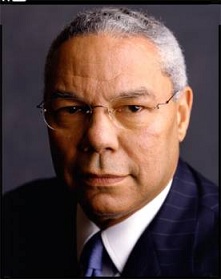 Colin Powell - Before the Republican National Convention, 1996. A personal and moving statement of faith set in a political context. Powell invokes the ideals of family, faith, and loyalty which sustained him throughout his own career of service.
Colin Powell - Before the Republican National Convention, 1996. A personal and moving statement of faith set in a political context. Powell invokes the ideals of family, faith, and loyalty which sustained him throughout his own career of service.
Colin Powell - Powell as President? Who would consider such a thing? Here's one American who felt strongly that the General would have made an astonishingly good choice. Not only one of America's true heroes, but with sky high ratings in the "trust" department, Powell is the Conscience of the Republican Party.
Colin Powell - Before the Republican National Convention for the second time in a row as, yes, the Keynote Speaker, Colin Powell more than anyone else except Bush himself DEFINED the Philadelphia moment. If America's promise, as seen at Philadelphia, is kept --- it will have to be said that Powell certainly did much to set the tone of it.
Colin Powell - "Bought with their blood, the Freedoms We Enjoy." Colin Powell Salutes African American heroes and patriots throughout the history of our nation. An eloquent exhortation from the Chairman of the Joint Chiefs of Staff of the United States Armed Services.
Colin Powell (2012) - Reluctant to take sides, he chides Romney for scanty foreign policy depth.
General Francis X. Taylor
General Francis X. Taylor - President George W. Bush has appointed Air Force General Taylor to be the State Department's Ambassador at Large and Co-ordinator for Counter-terrorism. We wish him godspeed in the wake of the disaster of September 11. God Bless America.
Commander-in-Chief
President Barack Obama - Hinge-Point of History. Will he be tough on terror? "Only in America is my story even possible." The election a culmination of struggle, we stand on the shoulders of history's giants.
Teaching Our Youth values like Responsibility, Patriotism - Bill O'Reilly tells what kids can learn from our first black Commander in Chief
We the People :: honor and patriotism - the spiritual side of democracy. More than gimme, gimme, what about faith and sacrifice?
We, the People, recognize that we have responsibilities as well as rights; that our destinies are bound together; that a freedom which only asks what's in it for me, a freedom without a commitment to others, a freedom without love or charity or duty or patriotism, is unworthy of our founding ideals, and those who died in their defense. --- President Barack Obama
We Served This Country, Too
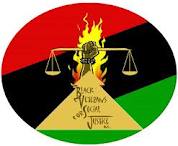
Black Veterans
for Social Justice
_______

In the Name of the Father, and the Son, and the Holy Spirit
AMEN
_______
Bibliography of Print Resources
Offline bibliography provided
to help students locate books via interlibrary loan if not on the shelves
of their school or public libraries. Students who can afford the cost
and the delay may purchase some of these books from online sources such as
Barnes and Noble, or use a search feature to locate additional titles on this topic.
- Susie King Taylor. Reminiscences of My Life in Camp with the 33rd
United States Colored Troop. One edition of this book by a former slave was printed in 1902. This Barnes and Noble reprint might be worth a try.
- Noah Andre Trudeau. Like Men of War: Black Troops in the Civil War, 1862-1865. This 1998 book received glowing reviews for its detailed
recounting of the difficulty of getting the Union to use Black troops; the
recruitment of escaped slaves; and the automatic death penalty applied to
Black prisoners of war by the Confederates. There were over 100 regiments
of Black Americans by the end of the war, engaging approximately 180,000
Black men in over 449 battles. (I do not know if the book covers the
Confederate use of Black Americans in the rebel army).
- Charity Adams Earley. One Woman's Army: A Black Officer Remembers the WAC. (College Station: Texas A&M University Press, 1989).
- Martin Binkin, and Mark J. Eitelberg. Blacks and the Military. Brookings Institution Press, 1982.
- Frank N. Schubert. Black Valor: Buffalo Soldiers and the Medal of Honor, 1870-1898. There were nearly two dozen African American recipients of the highest U.S. decoration for military valor just in the 9th and 10th cavalry. This book is available from Barnes and Noble. Shipping - quick turn-around time.
- Michael Lee Lanning. The African-American Soldier: From Crispus Attucks to Colin Powell. The author , Lieutenant Colonel Lanning, is an experienced military writer and retired army officer, provides a good overview of African Americans' military service to their country, a service that started with the American Revolution.
- Michael L. Cooper. Hell Fighters: African American Soldiers in World War I. (Lodestar, 1997). This book concentrates on the all-black 369th Regiment of the U.S. Army, which served on the Western Front longer than any other American unit --191 days. None were captured, but more than half died in combat.
- Gerald Astor. The Right to Fight: A History of African Americans in the Military.
An all-encompassing chronicle of African-Americans' struggles to serve in the armed forces of the US, by popular military historian Gerald Astor.
- Edwin Dorn. Who Defends America? Race, Sex, and Class in the
Armed Forces. (Washington, DC: Joint Center for Political Studies,
1989).
- Jack Foner. Blacks and the Military in American History.
(New York: Praeger, 1974).
- Jesse Johnson. Black Women in the Armed Forces: 1942 --
1974. (Hampton, VA: Jesse Johnson, 1974). Being privately
published, this book might be tough to locate. Students should ask
their librarian to check library systems in Virginia.
- James Paradis. Strike the Blow for Freedom: The 6th United States Colored Infantry in the Civil War. During the "brothers war" many African Americans were eager to strike a blow for freedom long before American public opinion was ready to support the fighting efforts of the "Sable Arm." This is the story of the 6th Regiment of United States Colored Infantry and their war against prejudice as well as the Confederacy. Organized and trained in Philadelphia, the soldiers of the United States Colored Infantry had to combat both subtle and direct forms of prejudice against the idea of armed black men fighting for the Union cause.
- Brenda L. Moore. To Serve My Country, to Serve My Race: The Story of the Only African American WACs Stationed Overseas during World War II.
(New York: New York University, 1996). The story of the
6888th Women's Army Corps, the first unit of African-American women to serve
overseas. They were stationed in France and Britain. The book
is a wonderful resource, with a history of black units prior to the
6888th, interviews, photos, a roster, and bibliography.
- Gail Lumet Buckley. American Patriots: The Story of Blacks in the Military, from the Revolution to Desert Storm. New York : Random House, c2001. FDR used to say that Americanism was a matter of the mind and heart, not of race and ancestry. With photographs throughout and dozens of original interviews with veterans, American Patriots is a tribute to the black American men and women who fought and often gave their lives in the service of that ideal.
- Edward Van Zile Scott
The Unwept: Black American Soldiers and the Spanish-American War. Teddy Roosevelt and the Rough Riders got the glory, but much of the U.S. success was due to the valor of the black veteran troops who were pulled from their western outposts to fight in Cuba. How they were treated is a shocking story.
- Graham Smith. When Jim Crow Met John Bull: Black American Soldiers in World War II Britain. (New York: St. Martin's,
1988).
- Bernard C. Nalty.
Strength for the Fight: A History of Black Americans in the Military. (The Free Press, 1989). Nalty tells of the heroic deeds and humiliating obstacles confronting black fighting forces and shows how black protest, civil unrest, military manpower needs, war, and peace have interacted over 200 years to create an integrated, yet racially troubled, American military establishment.
- Dudley Taylor Cornish. The Sable Arm: Black Troops in the Union Army. The Sable Arm was the first work to fully chronicle the remarkable story of the nearly 180,000 black troops who served in the Union army. This work paved the way for the exploration of the black military experience in other wars.
- James Henry Gooding. On the Altar of Freedom : A Black Soldier's Civil War Letters from the Front. Here is a vivid, unforgettable portrait of the Civil War as seen through the eloquent letters written by a black soldier in the Massachusetts 54th Regiment--the renowned regiment featured in the highly-acclaimed movie Glory
- Tom Willard. Wings of Honor. The tale of "Adrian Samuel Sharps" and one of the airmen in the famed 99th pursuit squadron. This is another installment in Willard's Black Sabre Chronicles about a family of African American heroes of U.S. military history.
- Kwame Anthony Appiah. Africana: The Encyclopedia of the African and African American Experience.
Politics as (un)usual
Never d Forget
Iraq Turnaround

Please Sign My Guestbook!!
Sign
? or ?
View-2
View-1
Correlative site African American Freedom Fighters - Soldiers for Liberty (LIU : Long Island University)
A Forgotten "Founding Father" Remembered [Prince Hall, Freemason]; Also, a little tribute to my Mother.
Freedom isn't free - let's never lose our gratitude
To report bad or ADD GOOD LINKS
NOTE: Prof. Cunnea no longer maintains this page.


Give me men to match my mountains







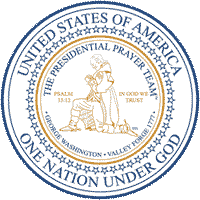

friend me (facebook)

no veteran left behind
Wednesday, 20-Aug-2025 00:40:37 EDT







 Colin Powell - Before the Republican National Convention, 1996. A personal and moving statement of faith set in a political context. Powell invokes the ideals of family, faith, and loyalty which sustained him throughout his own career of service.
Colin Powell - Before the Republican National Convention, 1996. A personal and moving statement of faith set in a political context. Powell invokes the ideals of family, faith, and loyalty which sustained him throughout his own career of service.













